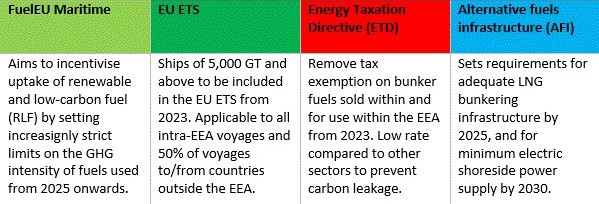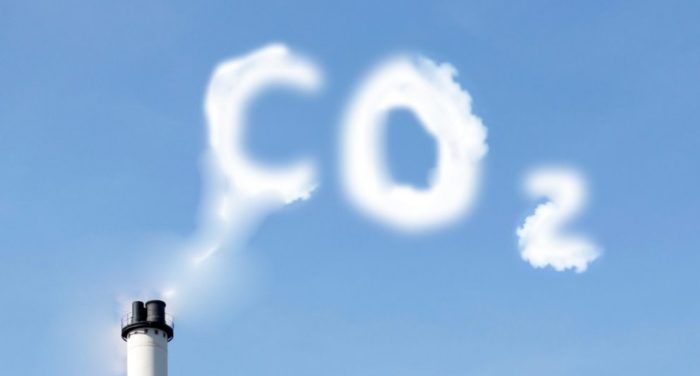IBIA has studied the European Commission’s “Fit for 55” package of proposals, and highlights a number of potential consequences and concerns.
The ‘Fit for 55’ package of 13 proposals has thousands of pages forming a complex web of measures. The four with most direct impact on the maritime sector and bunkering are:

These aim to stimulate uptake and supply of renewable and low-carbon fuels (RLF) for ships arriving at and departing from ports in the European Economic Area (EEA), including from countries outside the EEA.
The measures are carefully designed to prevent “carbon leakage” – recognising that the international nature of shipping could easily cause ships to evade EU-specific fuel taxes, fees and GHG intensity requirements by bunkering outside the EEA
says IBIA, highlighting that they also have the potential to disrupt the level playing field. Namely, the complexity these regulations would create for shipping companies and marine fuel suppliers is a concern, while their ability to shift demand from fossil fuels to RLFs in the next decade appear to be limited.
Potential impact of introducing tax on marine fuels
The proposal put forward by the Commission intends to remove tax exemptions on aviation and marine fuels in 2023 by updating the EU Energy Taxation Directive (EDT).
Approximate conversion factors would put the proposed tax on HFO sold and used in the EEA at almost €38 per tonne, or $45 per tonne at current exchange rates.
That price difference would make bunker prices in EEA ports less competitive, potentially eliminating current price advantages of taking bunkers in EEA ports and cause a shift in bunker demand away from EEA ports
FuelEU Maritime proposals concerns
This GHG policy concept that sets a limit on the overall lifecycle GHG intensity of fuels used. The policy aims to overcome the “chicken and egg” obstacle for wider market penetration of renewable and low-carbon fuels for shipping.
A key concern about these proposals is the complexity it would introduce for both users and suppliers of marine energy in order to prove and certify the full well to wake GHG lifecycle emissions of alternative non-fossil fuels
For shipping companies, this would extend the reporting requirement of annual CO2 equivalent emissions under the EU MRV regulation, using accredited verifiers to ensure the accuracy and completeness of the monitoring and reporting by companies.
Marine fuel suppliers globally who want to provide non-fossil fuels to meet the regulation would, according to the proposal, be required to document well-to-tank GHG emission factors on the relevant bunker delivery notes (BDNs) as well as CO2 equivalents per gram of fuel, along with a separate certificate identifying the fuel production pathway.
Moreover, certifying the real WtT GHG emissions and the production pathway could be very complex, as it is quite likely that new alternative fuels will be blends of components from different producers and production methods.
Shipping industry representatives have objected to the FuelEU approach because it puts the onus on shipping companies comply and to source compliant fuels; arguing that requirement should be put on marine fuel suppliers to make renewable and low carbon fuels available. While this is entirely understandable, the Commission’s proposal makes it clear that it has placed the responsibility on the energy consumers in order to create demand which might otherwise not materialise
Another criticism is the potential overreliance on biofuels, which can have questionable sustainability credentials. IBIA’s analysis of the proposal has identified two mechanisms that appear to address this issue.
Will inclusion of shipping in EU ETS affect the marine fuels market?
According to IBIA, there are two main potential impacts on the marine fuels market from extending the EU ETS to maritime transport:
- One being the extent to which this price signal incentivises uptake of alternative low-carbon fuels;
- And the other the extent to which it causes ships to change their trading patterns to reduce their exposure to the EU ETS.
Both will depend on the carbon price, which would need to be relatively high to have a significant impact.
The EU ETS proposal has assessed the potential for evasion, which becomes lucrative when the cost of compliance exceeds the costs associated with the evasive port call.
Exactly what carbon price level this may occur at is not certain, and will depend on the type of cargo, but the ETS could potentially cause both near and longer-term changes in trading patterns and hence which ports ships find most cost-effective for lifting bunkers
1. Are the EU standards for measuring lifecycle GHG intensity the right ones, and can they be adopted globally? 2. Will it send the right signals to achieve a long-term shift to truly sustainable forms of energy?
3. Will it lead to quicker decarbonization of international shipping than already adopted IMO instruments?
4. Will it hinder or accelerate progress on further GHG reduction measures at the IMO?
5. Will IMO safety regulations and commercial fuel quality standards be developed in time to ensure that alternative fuels and energy sources are safe and fit for purpose?
The answer to many of these questions will be coloured by opinions, some will be predictions, while some should be clarified in the process and negotiations that lie ahead before any of the proposals are adopted. The Commission has said that many details are likely to change before the reforms are adopted




























































